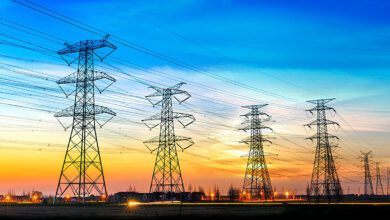The Union Minister for Power and New & Renewable Energy, RK Singh, conducted a comprehensive review of the 2,000 MW Subansiri Lower Hydroelectric Project located in Arunachal Pradesh/Assam on November 27, 2023. The minister’s visit included inspections of key construction sites, such as the dam, intake structures, and diversion tunnels in Gerukamukh, Assam, to assess the ongoing progress of the ambitious hydroelectric project.
During the visit, Minister RK Singh expressed satisfaction with the advancements made in the Subansiri project, emphasizing the growing importance of hydel projects in the context of India’s energy transition. He highlighted that round-the-clock renewable energy, a crucial aspect of reducing emissions and moving towards renewables, is not achievable without a significant contribution from hydro power.
Addressing the media, Minister Singh disclosed that India’s hydro power capacity is on the rise. Apart from the Subansiri project, the Government of Arunachal Pradesh has signed Memorandums of Understanding (MoUs) with central public sector undertakings for 13 additional hydroelectric projects, totalling 13,000 MW in Arunachal Pradesh. These initiatives are expected to attract an investment of approximately Rs. 1.4 lakh crore, significantly boosting the state’s economy.
Singh emphasized the positive developments in Jammu & Kashmir, where five hydel projects are under construction, contributing to the growing hydro potential in the region. He highlighted the overall effort to tap into India’s available hydro power capacity more effectively.
The minister acknowledged the surging power demand in the country, noting a 20% growth in demand from August to October 2023 compared to the previous year. According to NITI Aayog, India’s economy is projected to grow at 7.5% for the next two decades, necessitating a rapid increase in power capacity. Singh stated that the current power demand of around 2.31 lakh MW is expected to double by 2030.
Singh outlined India’s strides in power capacity expansion, transitioning from a power deficit nation to one with a surplus. He mentioned the government’s addition of 1.9 lakh MW in the last nine and a half years, contributing to India’s capability to export power to neighbouring countries such as Bangladesh and Nepal.
The minister underscored India’s leadership in energy transition on the global stage. Singh highlighted that India surpassed its commitment made at COP21 in Paris by achieving 40% non-fossil-fuel capacity by 2021, nine years ahead of schedule. He emphasized India’s responsible growth, using fossil fuels as needed, and highlighted the country’s relatively low per capita carbon emissions compared to developed nations.












